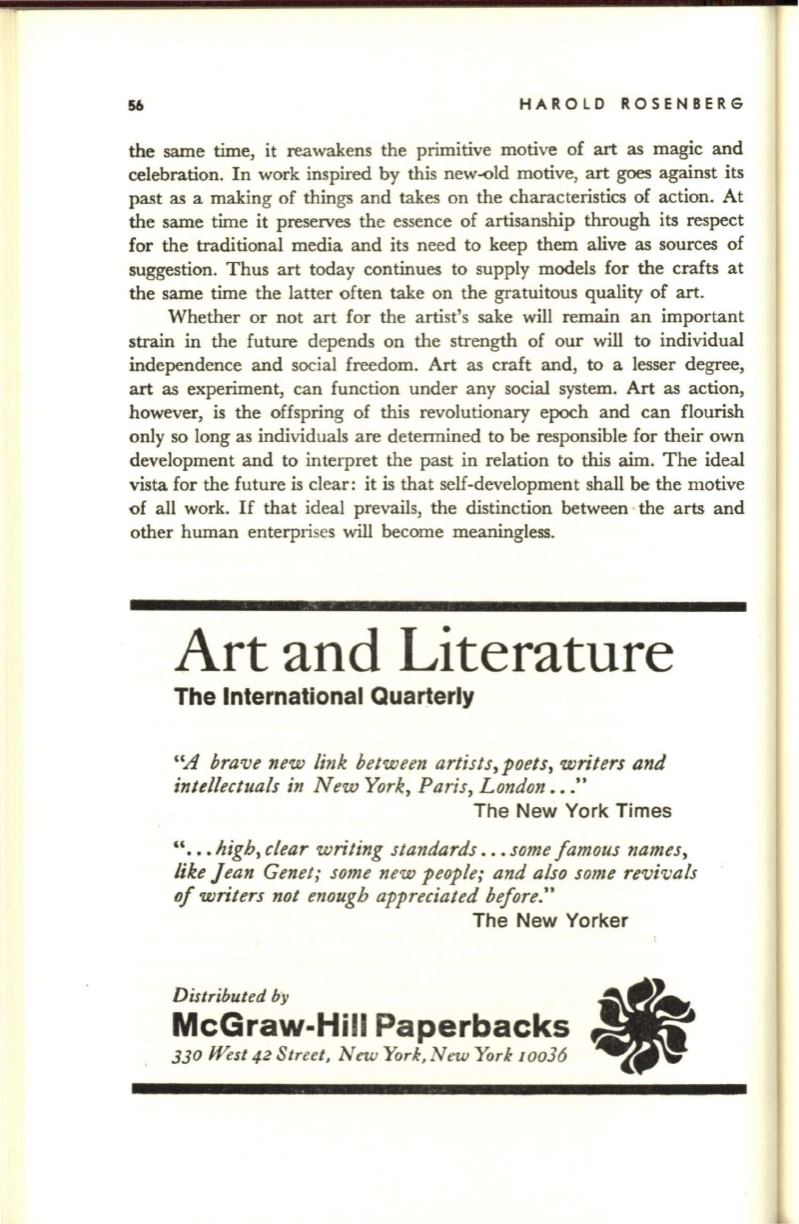
56
HAROLD ROSENBERG
the same time, it reawakens the primitive motive of
art
as magic and
celebration. In work inspired by this new-old motive, art goes against its
past as a making of things and takes on the characteristics of action. At
the same time it preserves the essence of artisanship through its respect
for the traditional media and its need to keep them alive as sources of
suggestion. Thus art today continues to supply models for the crafts at
the same time the latter often take on the gratuitous quality of
art.
Whether or not art for the artist's sake will remain an important
strain in the future depends on the strength of our will to individual
independence and social freedom. Art as craft and, to a lesser degree,
art
as experiment, can function under any social system. Art as action,
however, is the offspring of this revolutionary epoch and can flourish
only so long as individuals are determined to be responsible for their own
development and to interpret the past in relation to this aim. The ideal
vista for the future is clear: it is that self-development shall be the motive
of all work.
If
that ideal prevails, the distinction between the arts and
other human enterprises will become meaningless.
Art and Literature
The International Quarterly
''A
brave new link between artists, poets, writers and
intellectuals in New York, Paris, London •.
."
The New York Times
" ...
high, clear writing standards .
..
some famous names,
like Jean Genet; some new people; and also some revivals
of writers not enough appreciated before."
The New Yorker
Distributed
by
•
McGraw-Hili Paperbacks
330 West
42
Street, New York, New York 10036


